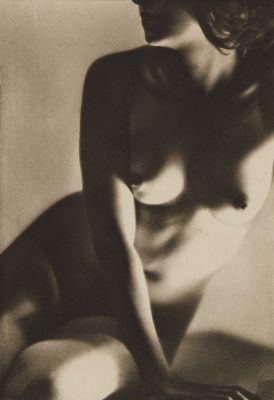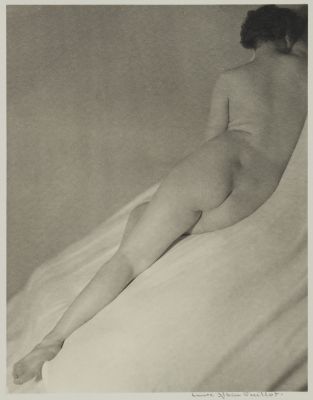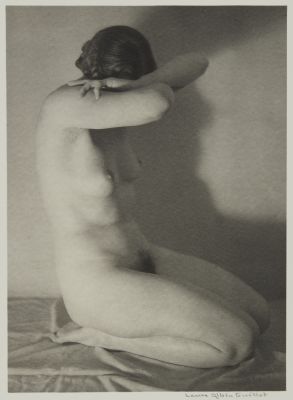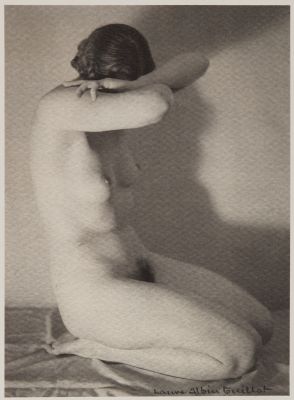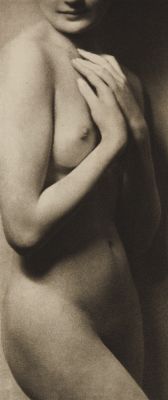
Title
Plate V from La Déesse CyprisArtist
Albin-Guillot, Laure (French, 1879-1962)Publication
La Déesse CyprisDate
1946Process
Fresson printImage Size
18 x 19.7 cmSheet Size
24 x 36 cm
In 1946 La déesse Cypris was published in Paris, intended as an ‘éloge de la volupté’ (a eulogy to sensuality) and featured twelve nude photographs by Laure Albin-Guillot, the ‘grande dame’ of French photography of the 1920s and 1930s. In her nude photographs, a genre in which she became famous, Albin-Guillot revealed the female body discreetly, in soft focus and with precise lighting. Nude photography was popular amongst female photographers in the 1930s, both inside and outside of France. This allowed them to show their modernity and their own perception of the beauty of the female body. They also proved that photographing the female body was not the exclusive domain of men. The book was printed in an edition of 250 copies, ten of which were printed in the Fresson pigment process and signed by Albin-Guillot.
The Fresson print is a direct carbon-based process invented and practiced by the Fresson family in France beginning in 1899. The process was preferred by pictorialsts because of it’s soft ‘charcoal’ properties revealing a depth and richness in photographs that is permanent and truly unmatched. It’s ability to achieve a variable tone based on the color used to create the carbon layers results in images combining the moody quality and textural richness of a charcoal drawing with the detail and resolution of photography.
Fresson famously did not patent his process, but maintained a high level of secrecy surrounding the production details. Even today the process remains proprietary, though further details are known: the prints were developed using a slurry of sawdust and water in which the friction of the sawdust helped remove the soluble gelatin.
Upon close examination it has been determined that this set of Fresson prints was not a set issued as the portfolio. It is possible that this set was used as a ‘Bon à Tirer’ set.
References
Laure Albin Guillot ou la volonté d’art, 1996 ed.Marval, CB
le Nu en Photographie, ed.,Collection Marcel Natkin, p. II
